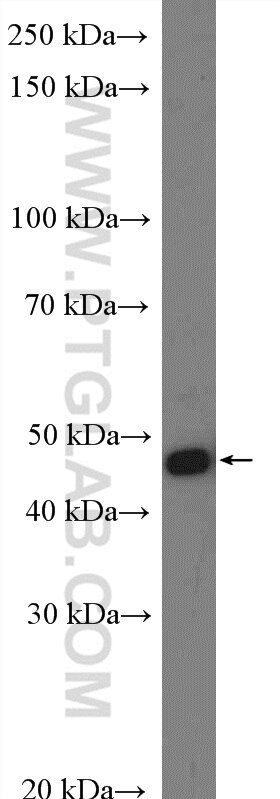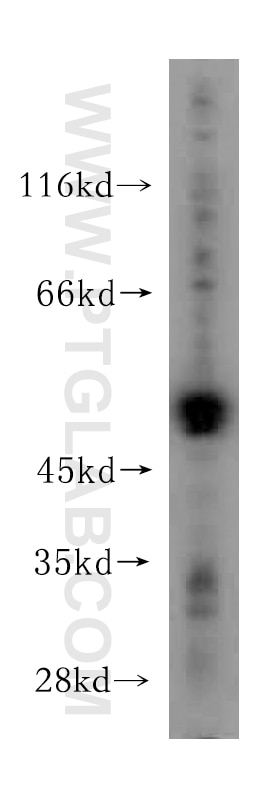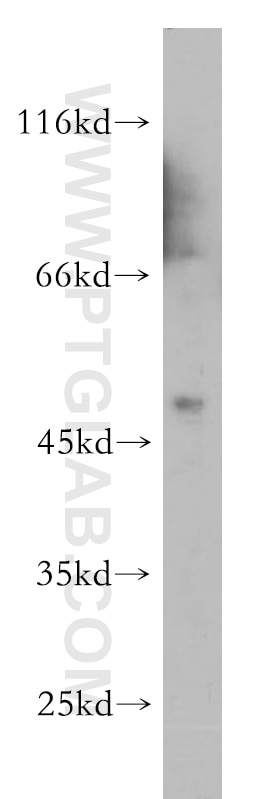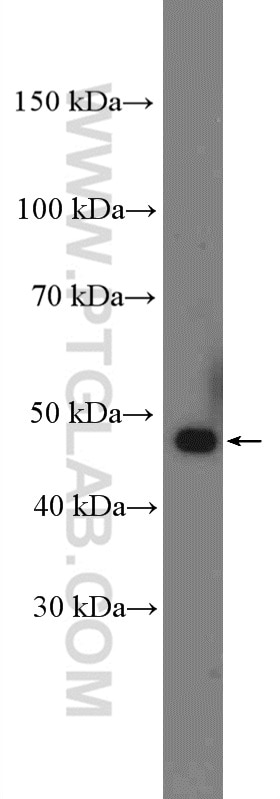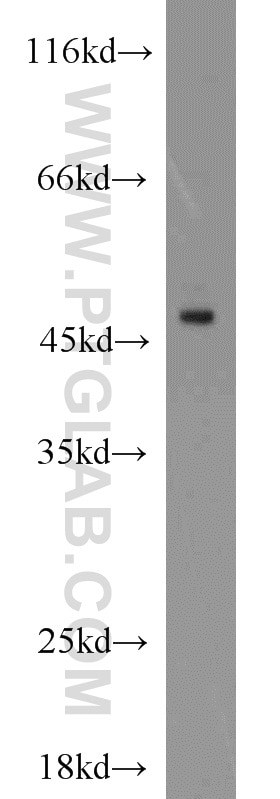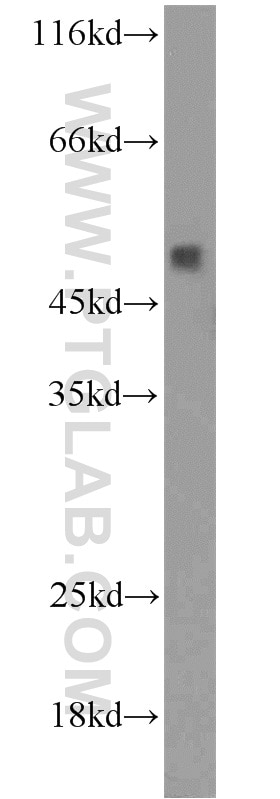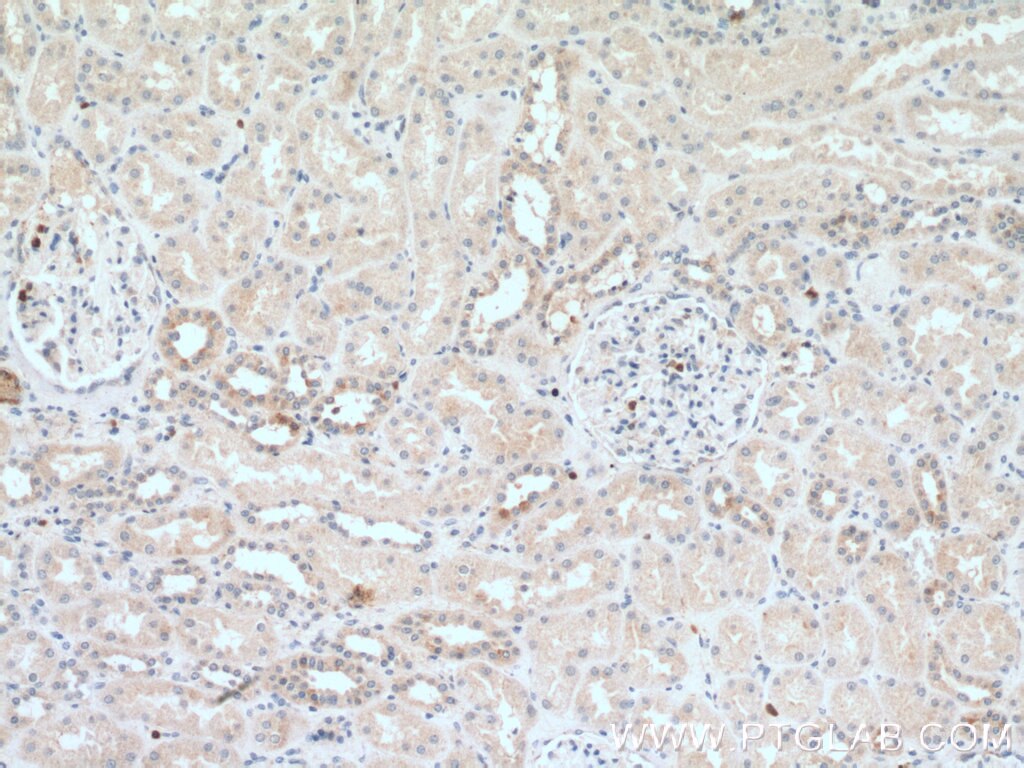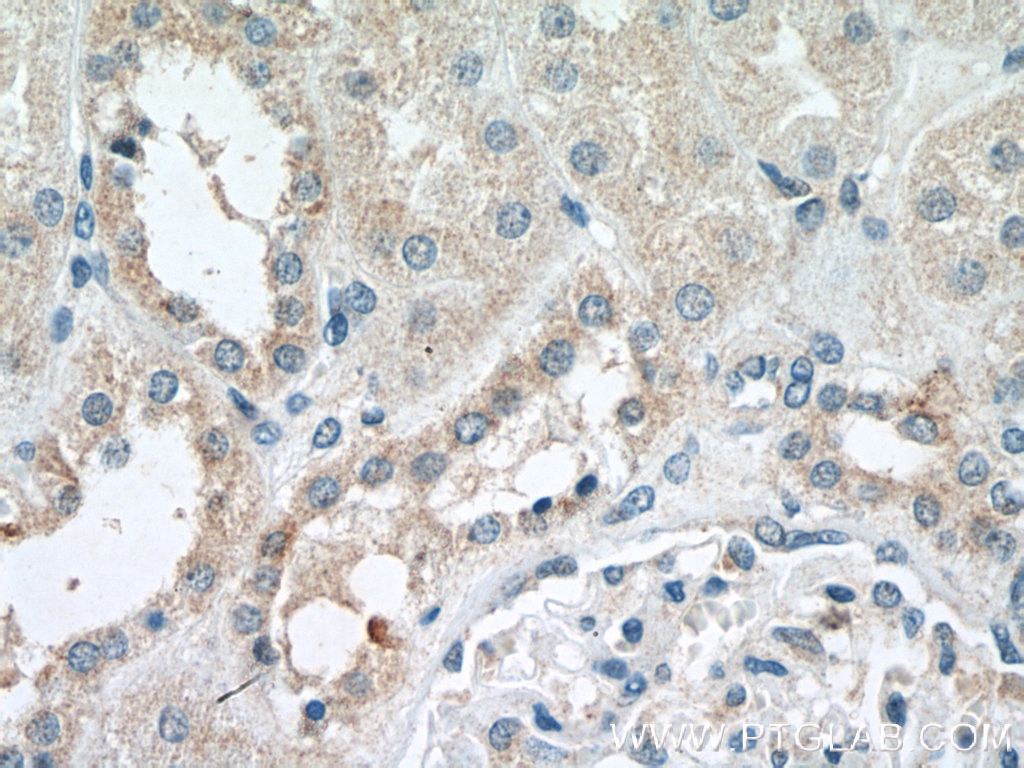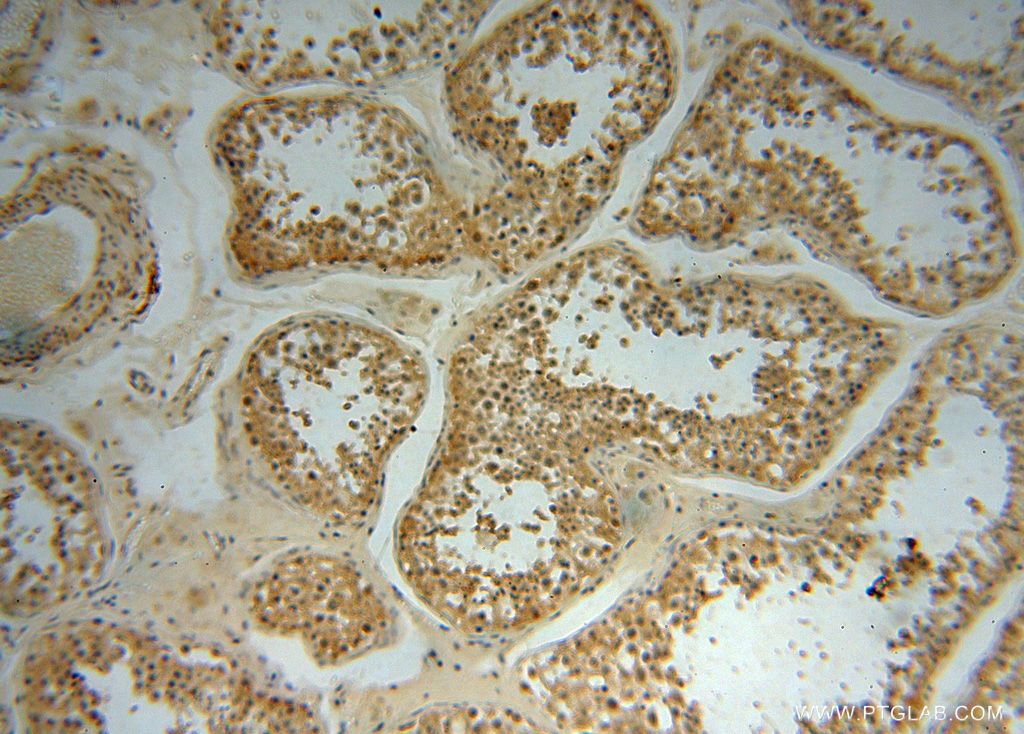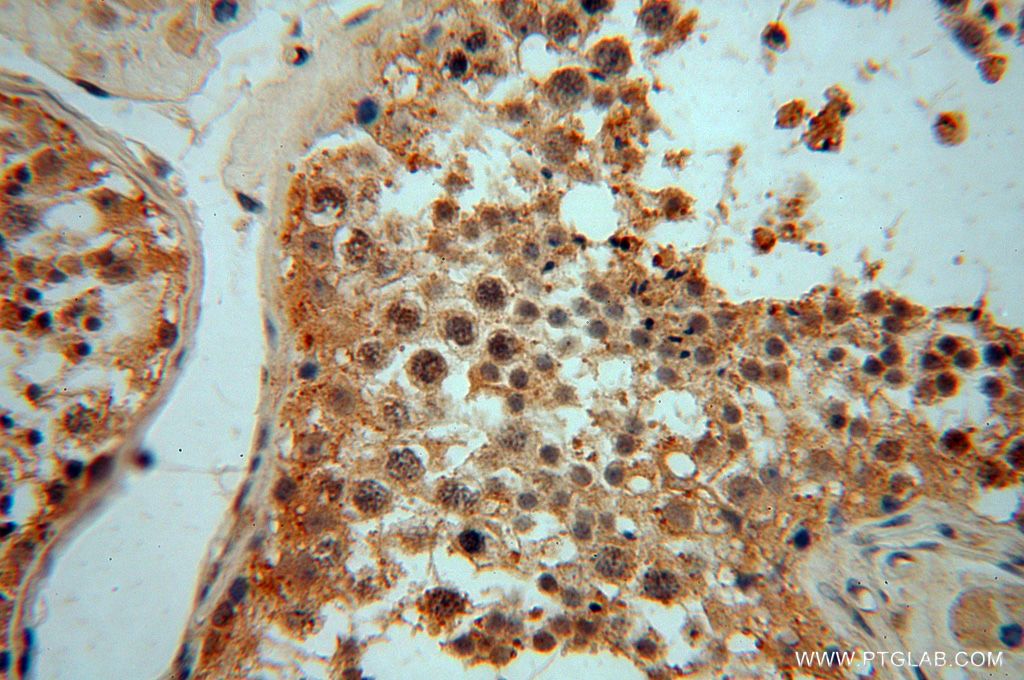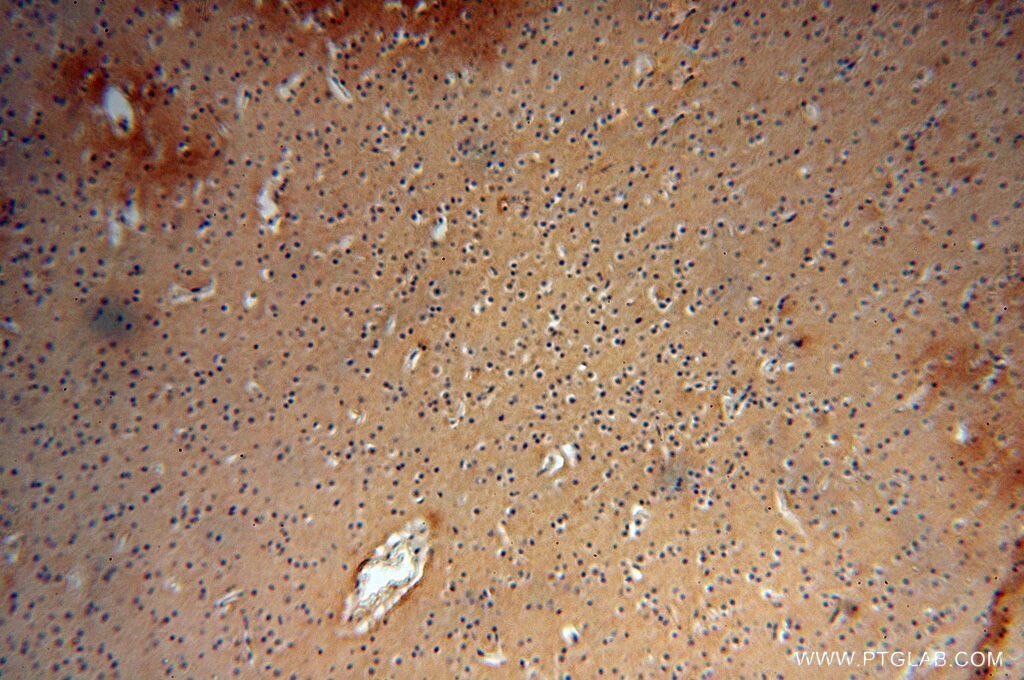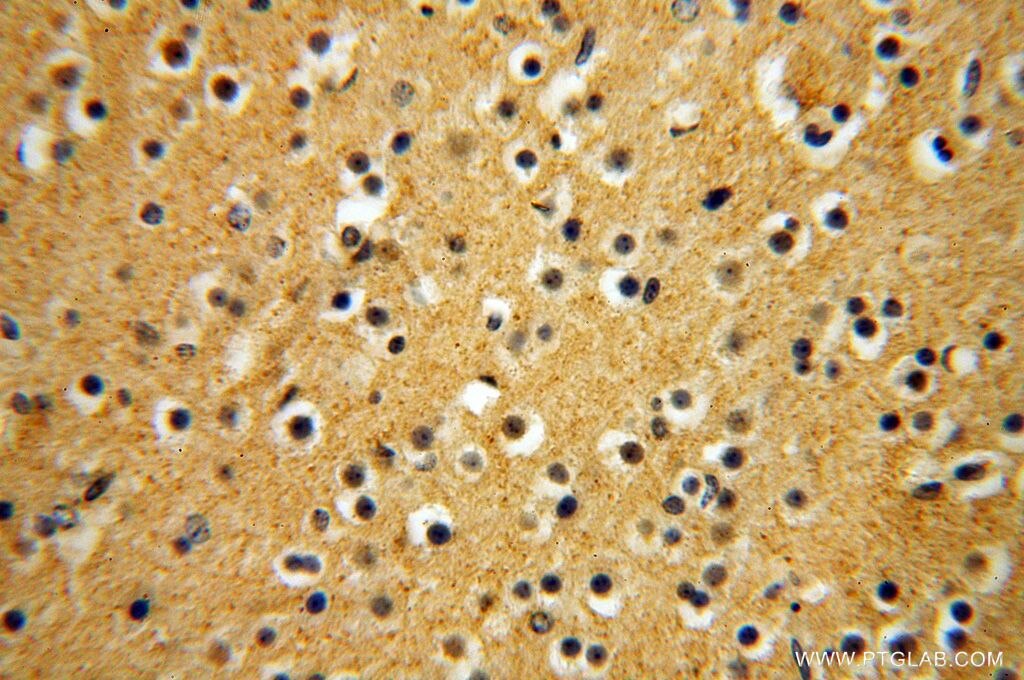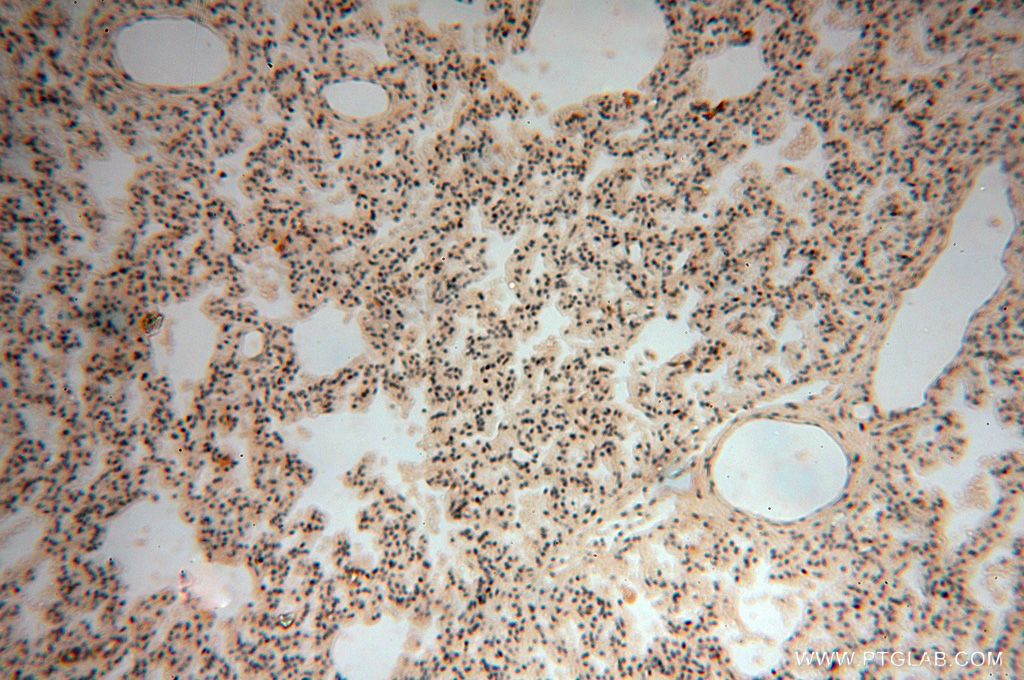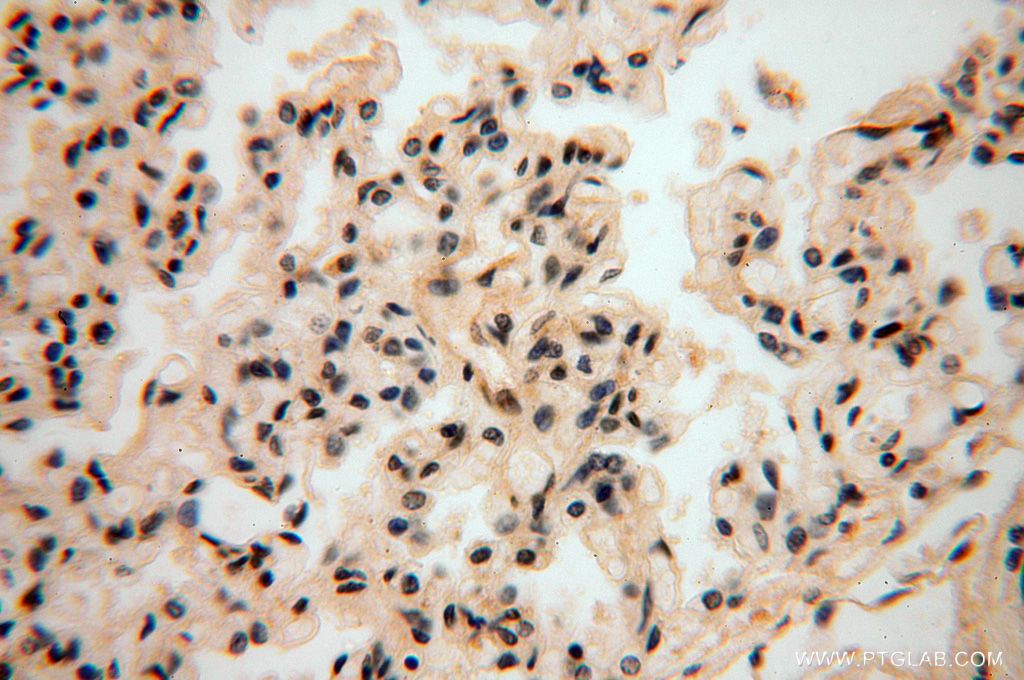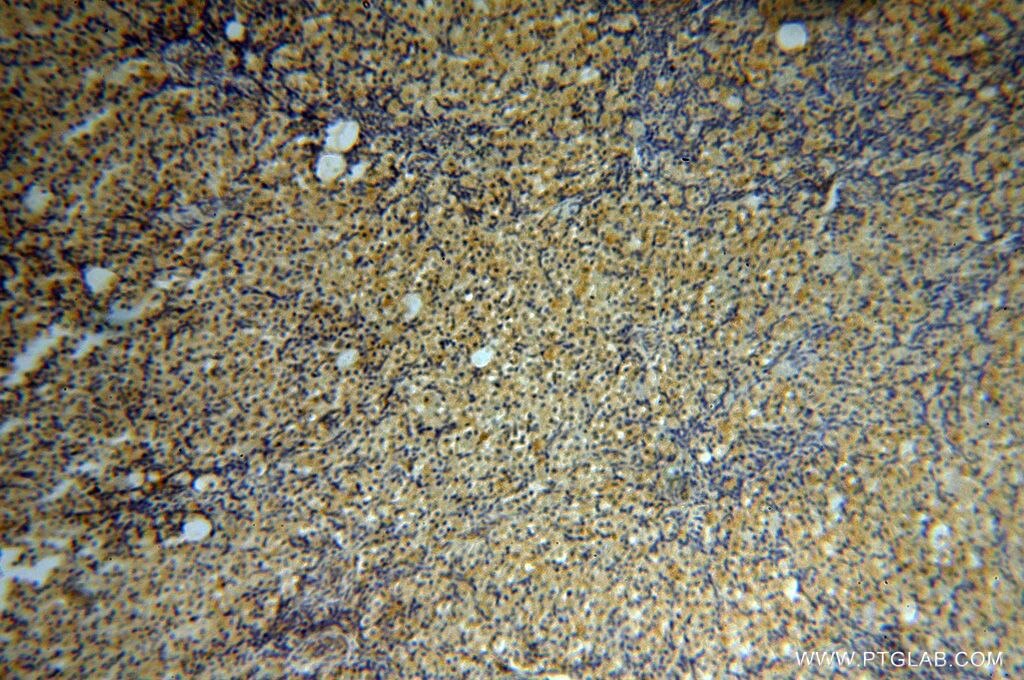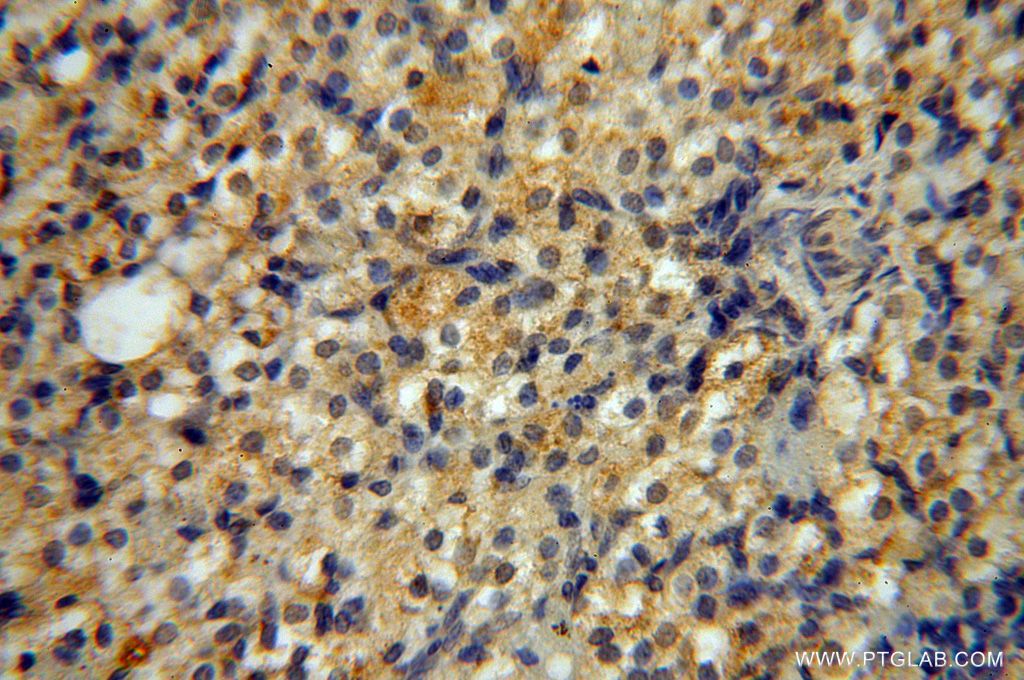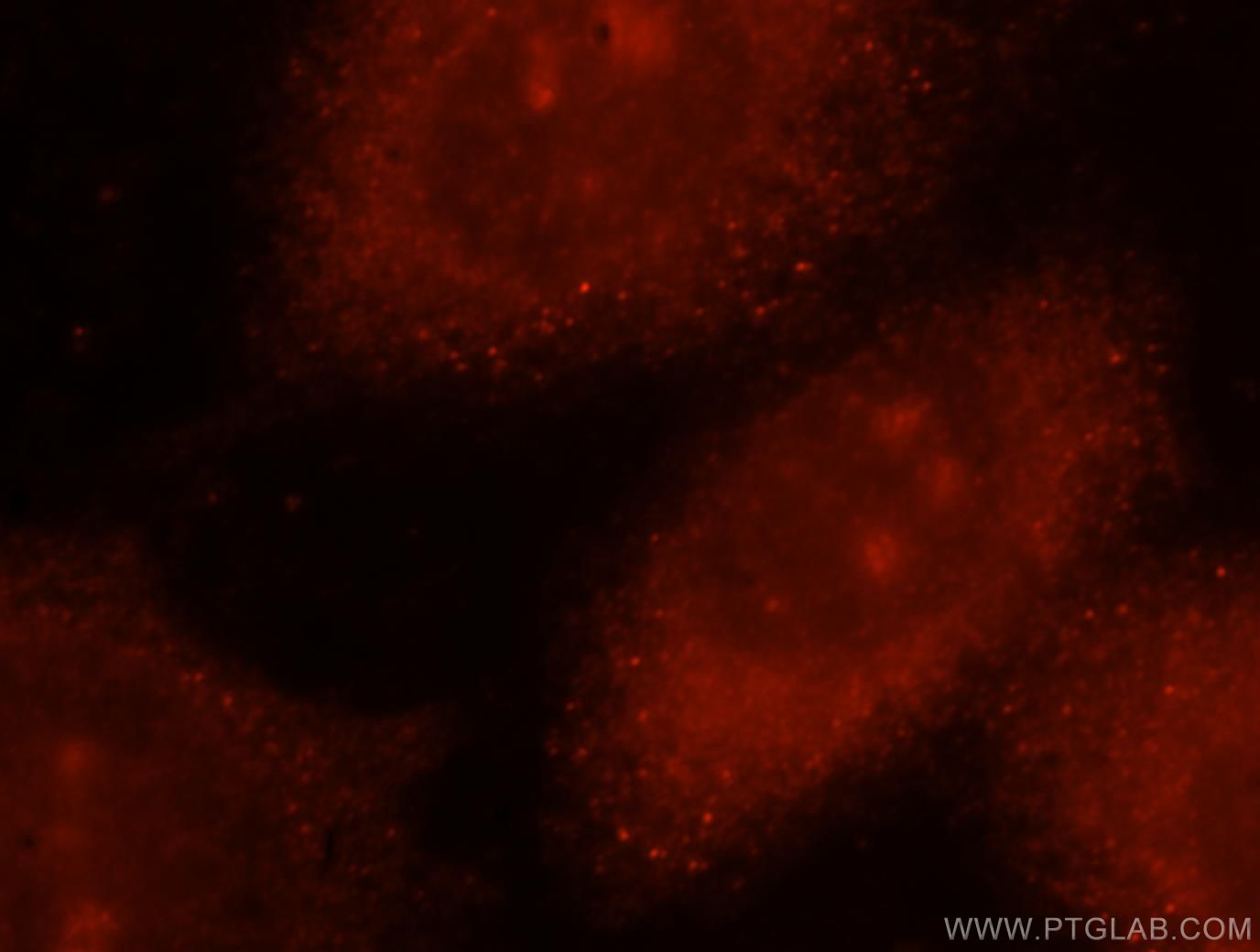Tested Applications
| Positive WB detected in | NIH/3T3 cells, HeLa cells, RAW264.7 |
| Positive IHC detected in | human kidney tissue, human testis tissue, human brain tissue, human lung tissue, human ovary tissue Note: suggested antigen retrieval with TE buffer pH 9.0; (*) Alternatively, antigen retrieval may be performed with citrate buffer pH 6.0 |
| Positive IF/ICC detected in | Hela cells |
Recommended dilution
| Application | Dilution |
|---|---|
| Western Blot (WB) | WB : 1:500-1:2000 |
| Immunohistochemistry (IHC) | IHC : 1:50-1:500 |
| Immunofluorescence (IF)/ICC | IF/ICC : 1:10-1:100 |
| It is recommended that this reagent should be titrated in each testing system to obtain optimal results. | |
| Sample-dependent, Check data in validation data gallery. | |
Published Applications
| KD/KO | See 3 publications below |
| WB | See 7 publications below |
| IHC | See 5 publications below |
| IF | See 3 publications below |
| CoIP | See 1 publications below |
Product Information
15548-1-AP targets NADK in WB, IHC, IF/ICC, CoIP, ELISA applications and shows reactivity with human, mouse, rat samples.
| Tested Reactivity | human, mouse, rat |
| Cited Reactivity | human, mouse |
| Host / Isotype | Rabbit / IgG |
| Class | Polyclonal |
| Type | Antibody |
| Immunogen |
CatNo: Ag7906 Product name: Recombinant human NADK protein Source: e coli.-derived, PGEX-4T Tag: GST Domain: 98-446 aa of BC001709 Sequence: LTWNKSPKSVLVIKKMRDASLLQPFKELCTHLMEENMIVYVEKKVLEDPAIASDESFGAVKKKFCTFREDYDDISNQIDFIICLGGDGTLLYASSLFQGSVPPVMAFHLGSLGFLTPFSFENFQSQVTQVIEGNAAVVLRSRLKVRVVKELRGKKTAVHNGLGEKGSQAAGLDMDVGKQAMQYQVLNEVVIDRGPSSYLSNVDVYLDGHLITTVQGDGVIVSTPTGSTAYAAAAGASMIHPNVPAIMITPICPHSLSFRPIVVPAGVELKIMLSPEARNTAWVSFDGRKRQEIRHGDSISITTSCYPLPSICVRDPVSDWFESLAQCLHWNVRKKQAHFEEEEEEEEEG Predict reactive species |
| Full Name | NAD kinase |
| Calculated Molecular Weight | 49 kDa |
| Observed Molecular Weight | 49 kDa |
| GenBank Accession Number | BC001709 |
| Gene Symbol | NADK |
| Gene ID (NCBI) | 65220 |
| RRID | AB_2147345 |
| Conjugate | Unconjugated |
| Form | Liquid |
| Purification Method | Antigen affinity purification |
| UNIPROT ID | O95544 |
| Storage Buffer | PBS with 0.02% sodium azide and 50% glycerol, pH 7.3. |
| Storage Conditions | Store at -20°C. Stable for one year after shipment. Aliquoting is unnecessary for -20oC storage. 20ul sizes contain 0.1% BSA. |
Background Information
NAD kinase (NADK) is the sole NADP+-biosynthetic enzyme that catalyzes phosphorylation of NAD+ to yield NADP+ using ATP as a phosphoryl donor, and thus, plays a vital role in the cell and represents a potentially powerful antimicrobial drug target (PMID:21526340). It belongs to the NAD kinase family. NADK has 3 isoforms with the molecular mass of 49, 63 and 46 kDa. The catalytically active human NADK is a homotetramer (PMID:11594753).
Protocols
| Product Specific Protocols | |
|---|---|
| IF protocol for NADK antibody 15548-1-AP | Download protocol |
| IHC protocol for NADK antibody 15548-1-AP | Download protocol |
| WB protocol for NADK antibody 15548-1-AP | Download protocol |
| Standard Protocols | |
|---|---|
| Click here to view our Standard Protocols |
Publications
| Species | Application | Title |
|---|---|---|
Cell Metab Upregulation of Antioxidant Capacity and Nucleotide Precursor Availability Suffices for Oncogenic Transformation.
| ||
Sci Adv G6PD-mediated increase in de novo NADP+ biosynthesis promotes antioxidant defense and tumor metastasis. | ||
Nucleic Acids Res Human DNA ligase IV is able to use NAD+ as an alternative adenylation donor for DNA ends ligation. | ||
Technol Cancer Res Treat A Pyroptosis-Related Gene Signature Predicts Prognosis and Tumor Immune Microenvironment in Colorectal Cancer | ||
ACS Omega Profiling of the Peripheral Blood Mononuclear Cells Proteome by Shotgun Proteomics Identifies Alterations of Immune System Components, Proteolytic Balance, Autophagy, and Mitochondrial Metabolism in Glaucoma Subjects | ||
Clin Exp Hepatol NADK as a molecular marker to distinguish between alcohol- and non-alcohol-associated liver cirrhosis: A pilot study |

